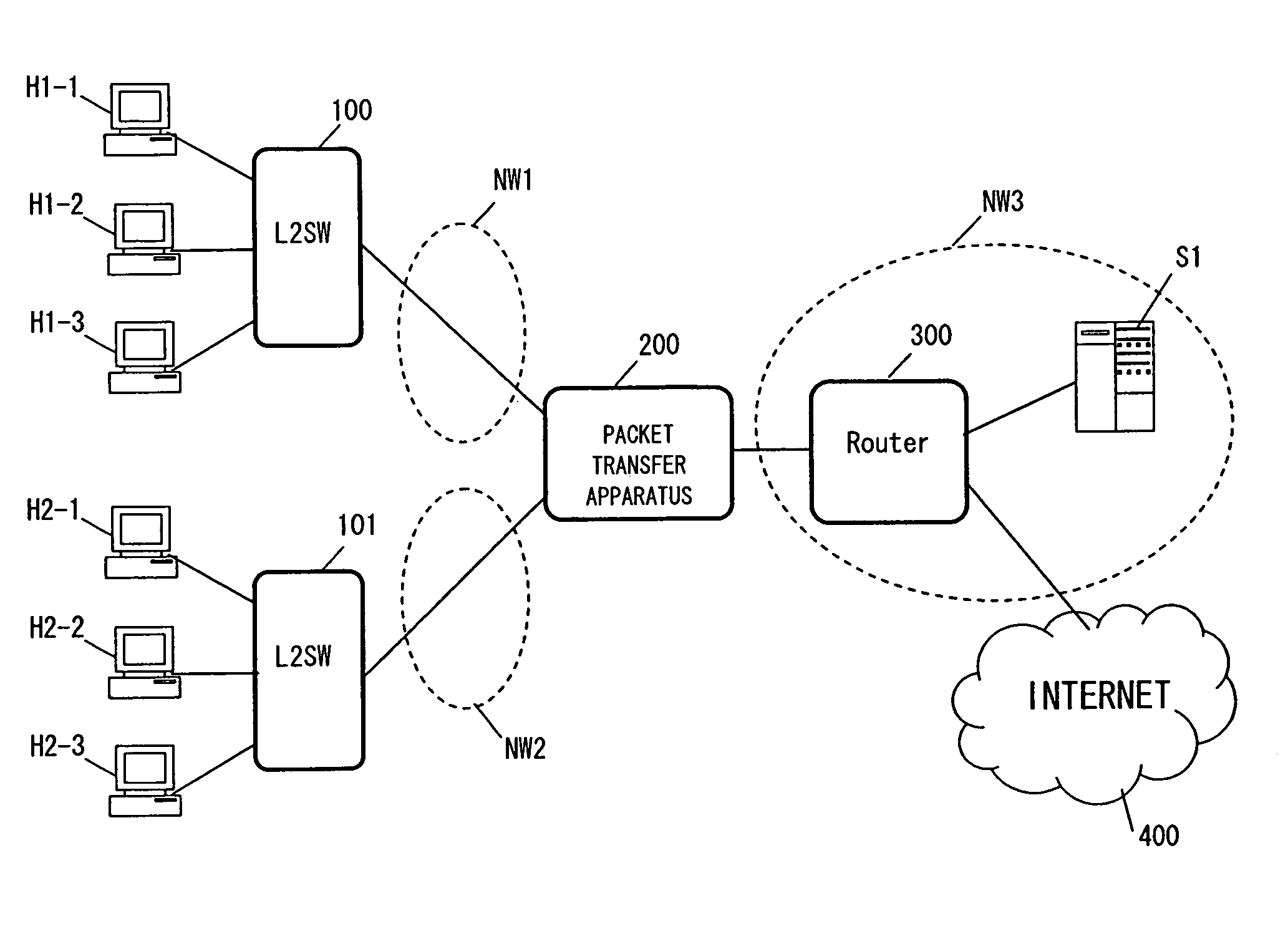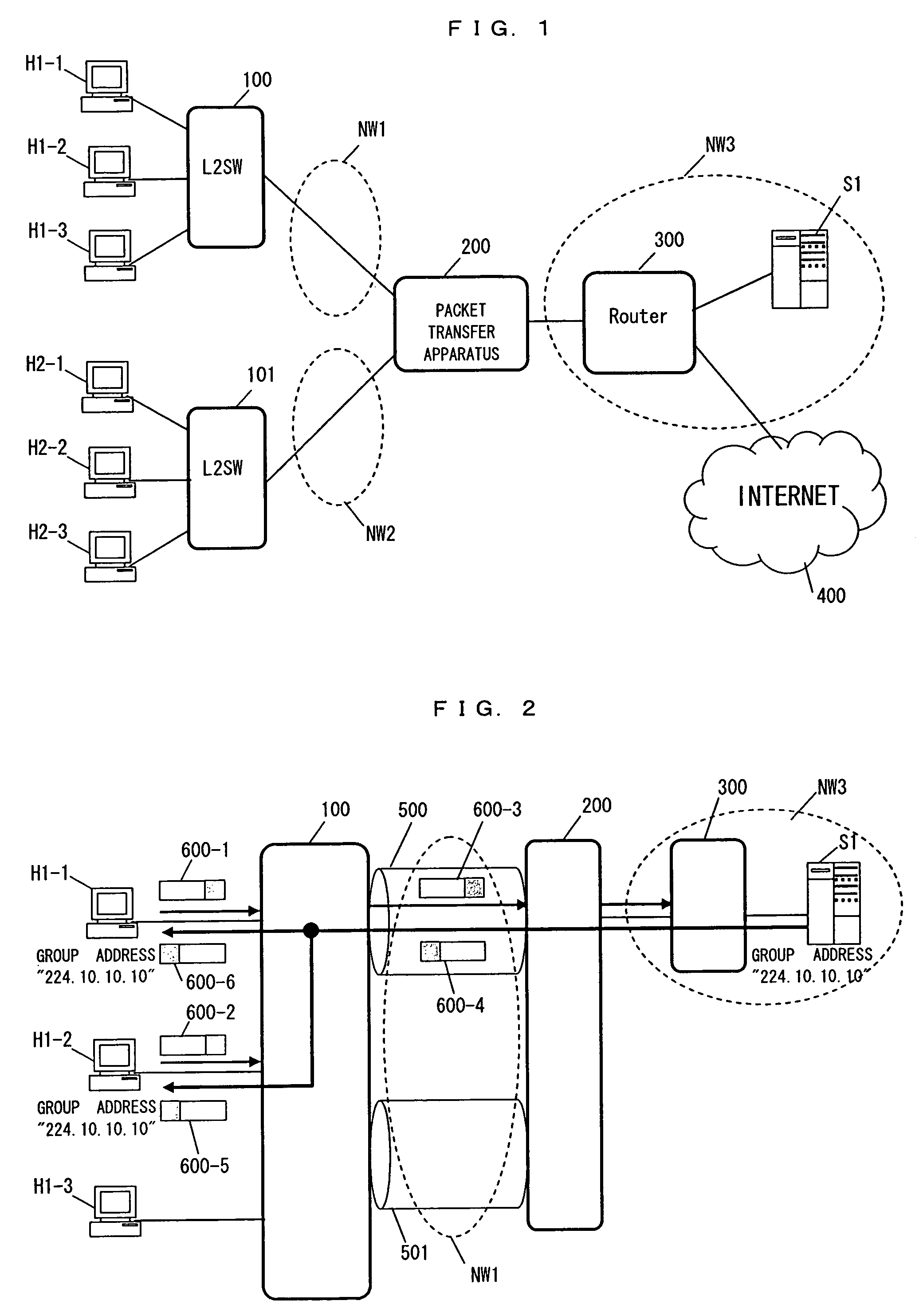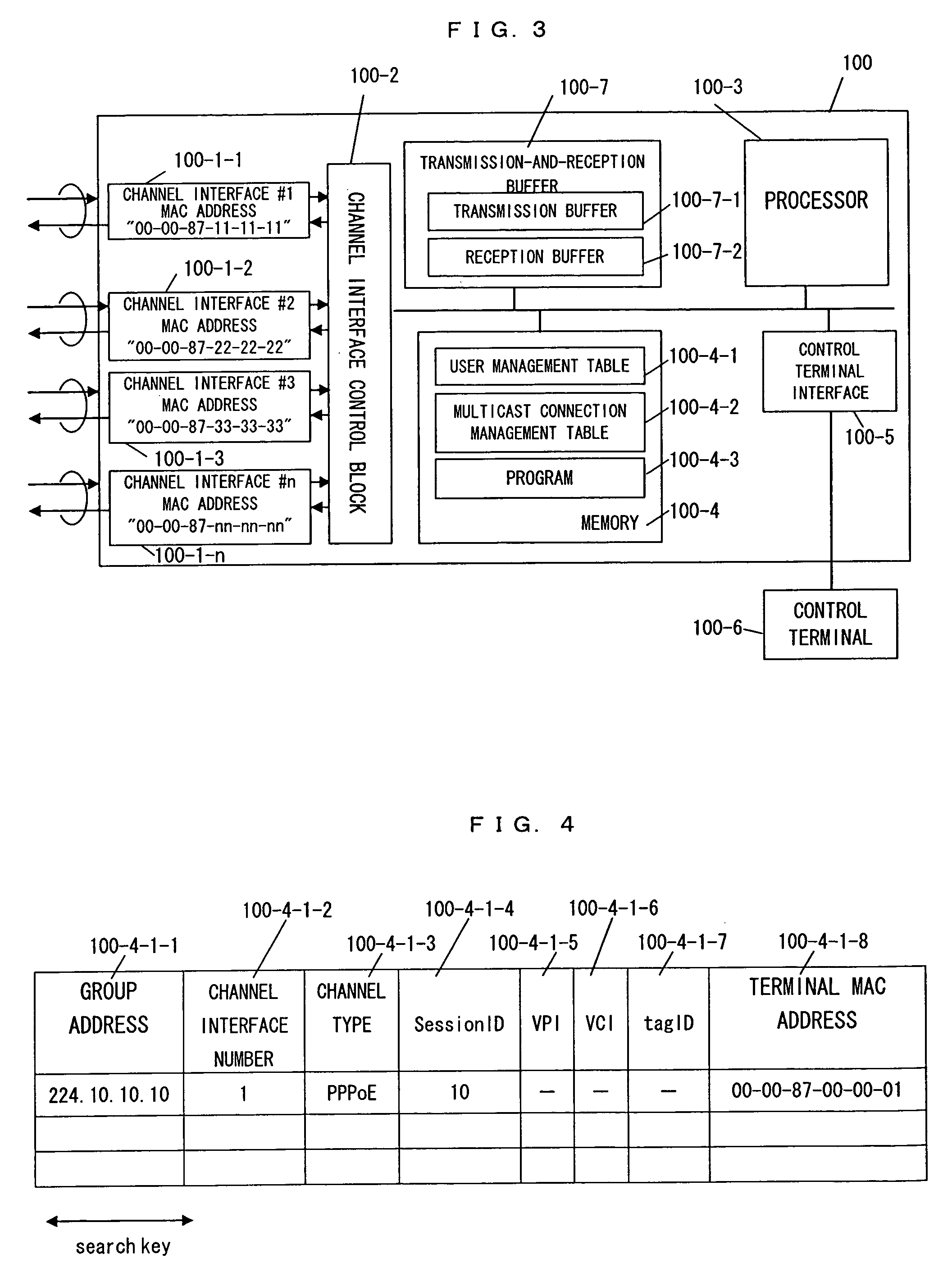Layer 2 switch
a layer 2 switch and switch technology, applied in data switching networks, data switching details, multiplex communication, etc., can solve the problem that the layer 2 switch cannot perform multicast packet distribution together, and achieve the effect of reducing the amount of bandwidth wasted
- Summary
- Abstract
- Description
- Claims
- Application Information
AI Technical Summary
Benefits of technology
Problems solved by technology
Method used
Image
Examples
case 1
(Case 1 of Leaving a Multicast Group)
[0078]The operation of the Layer 2 switch performed when a user terminal leaves a multicast group will next be described. The sequence of leaving a multicast group depends on whether the user terminal makes a request of leaving explicitly or not. The user terminal is assumed not to make a request of leaving explicitly when the user terminal becomes out of order, for instance.
[0079]FIG. 12 shows a sequence in which the user terminal H1-1 and the user terminal H1-2 make a request of leaving explicitly.
[0080]The user terminal H1-2 wants to leave the multicast group with group address “224.10.10.10” and indicates the intention to leave by sending an IGMP leave packet (SQ2-1). The IGMP leave packet reaches channel interface #2 of the Layer 2 switch 100 and is transferred to the channel interface control block 100-2, which transfers the packet to the reception buffer 100-7-2 and generates an interrupt to notify the processor 100-3 that the packet has b...
case 2
(Case 2 of Leaving a Multicast Group)
[0087]FIG. 13 shows a sequence of stopping distribution from the content distribution server S1 when the user terminal H1-1 and the user terminal H1-2 leave the multicast group with group address “224.10.10.10”, without indicating their intention to leave explicitly, such as when a user terminal failure occurs.
[0088]The Layer 2 switch 100 sends an IGMP query packet to the user terminals included in the user management table 100-4-1 successively in order to check whether they are connected (SQ3-1). If the user terminal H1-2 operates normally, the user terminal H1-2 returns an IGMP response packet (SQ3-2). If no response is returned, the Layer 2 switch 100 considers that the user terminal H1-2 is not connected and deletes the user information of the user terminal H1-2 from the user management table 100-4-1 (SQ3-3). After the user terminal information is deleted from the user management table 100-4-1, the user management table 100-4-1 is searched th...
PUM
 Login to View More
Login to View More Abstract
Description
Claims
Application Information
 Login to View More
Login to View More - R&D
- Intellectual Property
- Life Sciences
- Materials
- Tech Scout
- Unparalleled Data Quality
- Higher Quality Content
- 60% Fewer Hallucinations
Browse by: Latest US Patents, China's latest patents, Technical Efficacy Thesaurus, Application Domain, Technology Topic, Popular Technical Reports.
© 2025 PatSnap. All rights reserved.Legal|Privacy policy|Modern Slavery Act Transparency Statement|Sitemap|About US| Contact US: help@patsnap.com



